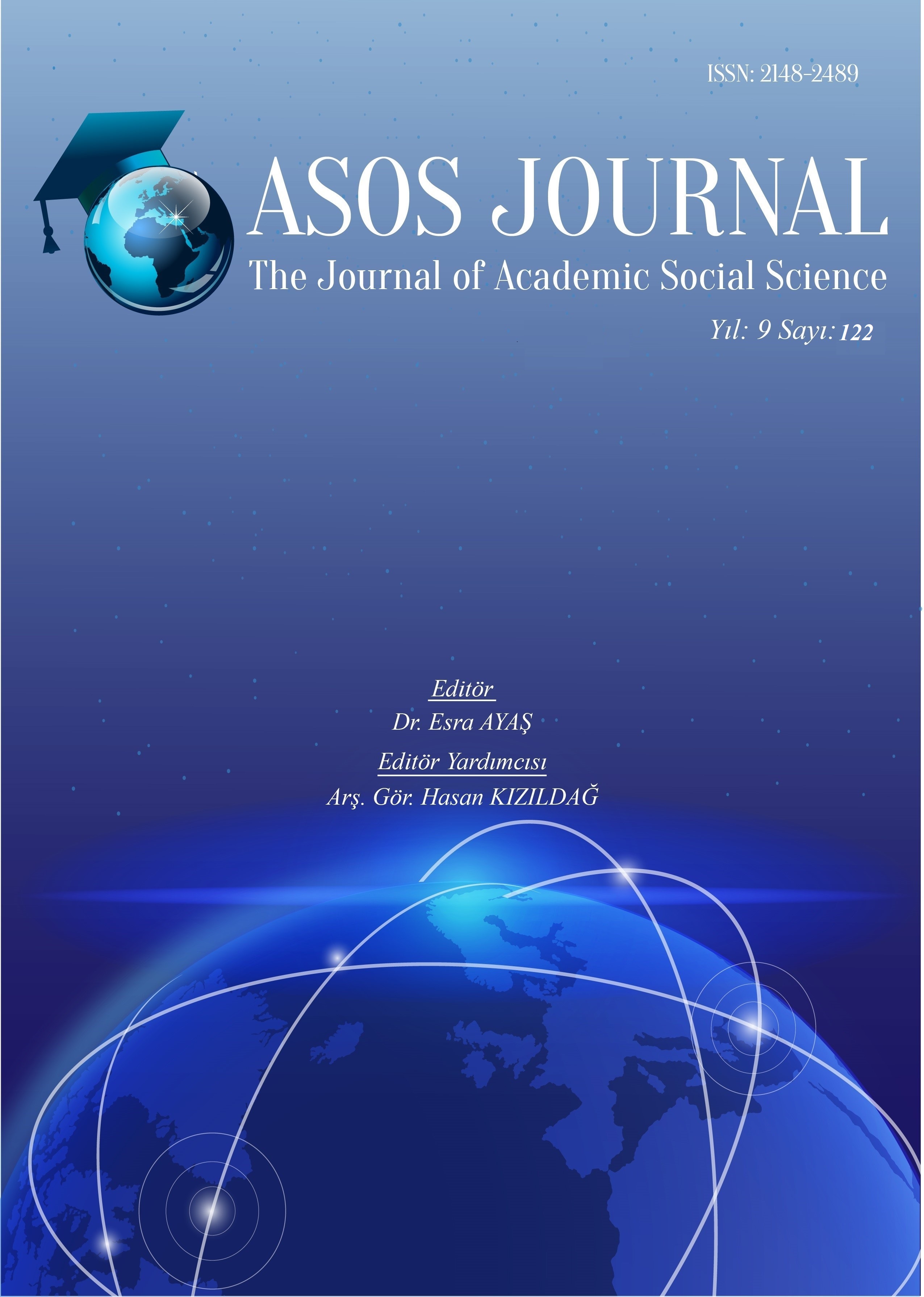DİJİTAL KAMPÜSLER GELENEKSEL KAMPÜSLERİN YERİNİ ALABİLİR Mİ? : COVİD-19 PANDEMİSİNDE UZAKTAN EĞİTİM ALAN ÜNİVERSİTES ÖĞRENCİLERİNİN UZAKTAN EĞİTİM UYGULAMALARININ BUGÜNÜ VE GELECEĞİ HAKKINDAKİ DÜŞÜNCELERİ
Author :
Abstract
Geçmişi üç yüz yıl öncesine kadar giden ve teknolojik gelişmelerle kendisini geliştiren bir eğitim yöntemi olan uzaktan eğitim özellikle dijital teknolojilerin gelişmesi daha pratik ve yaygın bir eğitim biçimi olmuştur. 2020 yılında yaşanan pandemi dönemine kadar tüm dünyada bir alternatif eğitim yöntemi olan uzaktan eğitim, pandemi ile bir anda mecburi bir eğitim uygulaması olmuştur. Türkiye’de ilk, orta ve lise düzeyinde eğitim veren okullar pandemi döneminde televizyon ve dijital araçlarla uzaktan eğitim modelini uygularken, üniversiteler yaklaşık üç öğretim dönemi boyunca dijital tabanlı uzaktan eğitim modelini uygulamıştır. Bu mecburiyet, uzaktan eğitimin de kendini sınamasına neden ve fırsat olmuştur. Bu araştırmada pandemi döneminde tüm üniversitelerde uygulanan uzaktan eğitim uygulamalarının üniversite öğrencileri üzerindeki etkisi hakkında bir betimsel çalışma yapılmıştır. Uzaktan eğitim yöntemini ilk kez bu kadar yoğun biçimde deneyimleyen öğrencilerin uzaktan eğitimin avantajları ve dezavantajları hakkındaki görüşleri ve uzaktan eğitim hakkındaki genel görüşleri araştırılmıştır. Çevrim içi anket yöntemi ile yapılan ve 980 uzaktan eğitim deneyimi yaşayan üniversite öğrencisine uygulanan öğrencilerin yarısından fazlası uzaktan eğitim hakkında olumlu bir intibada olduğunu belirtmiştir. Öğrencilere göre uzaktan eğitimde yaşanan en büyük iki sıkıntı teknolojik aksaklıklar ve öğretim üyelerinin bu formatta eğitim vermeye hazır olmamasıdır. Öğrencilerin yüzde 62’si gelecekte uzaktan eğitimin fiziki eğitime alternatif olacağına inanmaktadır. Öğrencilerin yüzde 45’i uzaktan eğitim sayesinde ortaya çıkacak dijital kampüslerin geleneksel kampüslerin yerini alacağına inanmaktadır. Üniversitelerinde pandemi döneminde uzaktan eğitim alan öğrencileri uzaktan eğitimin avantajlarının maximize edilmesi ve dezavantajlarının minimize edilmesi durumunda uzaktan eğitimin verimli bir eğitim modeli olacağını düşünmektedir.
Keywords
Abstract
Distance education, which is an education method that goes back three hundred years and develops itself with technological developments, has become a more practical and common education form, especially with the development of digital technologies. Distance education, which was an alternative education method all over the world until the pandemic period in 2020, suddenly became a compulsory education application with the pandemic. While primary, secondary and high school schools in Turkey applied the distance education model with television and digital tools during the pandemic period, universities applied the digital-based distance education model for approximately three education periods. This obligation has been a cause and opportunity for distance education to test itself. In this study, a descriptive study was conducted about the effect of distance education applications applied in all universities on university students during the pandemic period. The opinions of the students, who experienced the distance education method so intensely for the first time, like the advantages and disadvantages of distance education and their general opinions about distance education were investigated. More than half of the students, who were applied to 980 university students who had experience in distance education, using the online survey method, stated that they had a positive impression about distance education. According to students, the two biggest problems experienced in distance education are technological disruptions and the lack of readiness of faculty members to provide education in this format. 62 percent of students believe that distance education will be an alternative to physical education in the future. 45 percent of students believe that digital campuses that will emerge through distance education will replace traditional campuses. Students who receive distance education at their universities during the pandemic period think that distance education will be an efficient education model in the future if the advantages of distance education are maximized and the disadvantages are minimized.
Keywords
- Arat, T.; Bakan, Ö. (2014) Uzaktan Eğitim ve Uygulamaları. Selçuk Üniversitesi Sosyal Bilimler Meslek Yüksekokulu Dergisi, 14(1-2): 363-374.
- Aydemir, M. (2018) Uzaktan Eğitim: Program, Ders Materyal Tasarımı. Konya: Eğitim Yayınları.
- Berigel, M. ve Çetin, İ. (2019) Açık ve Uzaktan Öğretimde Öğreten ve Öğrenen Rolleri. içinde Açık ve Uzaktan Öğrenme, E. Tekinarslan ve M.D. Gürer (eds)., Genişletilmiş 2. Baskı İstanbul: Pegem Akademi Yayınları.
- Bozkurt, A., Sharma, R.C. (2020) Emergency remote teaching in a time of global crisis due to CoronaVirus pandemic. Asian Journal of Distance Education, 15(1): i-vi.
- Çobanoğlu C. & Doğan S. (2020). Uzaktan Eğitim Anketi. University of South Florida M3 Center. https://usf.az1.qualtrics.com/jfe/form/SV_6X4NxGwloZH66c5 Erişim Tarihi: 06.08.2020.
- Gökçe, A.T. (2008) Küreselleşme Sürecinde Uzaktan Eğitim. D.Ü. Ziya Gökalp Eğitim Fakültesi Dergisi, 11: 1-12.
- Gürer, M. D. (2019) Açık ve Uzaktan Öğrenmenin Temelleri, içinde Açık ve Uzaktan Öğrenme, E. Tekinarslan ve M.D. Gürer (eds)., Genişletilmiş 2. Baskı İstanbul: Pegem Akademi
- Karadağ, E., Yücel, C. (2020) Yeni Tip Koronavirüs Pandemisi Döneminde Üniversitelerde Uzaktan Eğitim : Lisans Öğrencileri Kapsamında Bir Değerlendirme Çalışması. Yükseköğretim Dergisi, Mayıs 2020, 1-12.
- Kaya, Z. (2002) Uzaktan Eğitim. Ankara: Pegem A Yayınları.
- MEB (2020) Turkey Made Digital World List With Its Distance Education Statistics. http://www.meb.gov.tr/turkey-made-digital-world-list-with-its-distance-educationstatistics/haber/21158/en (Erişim: 06.07.2020)
- Sun, L., Tang, Y. ve Zuo, W. (2020) Coronavirus Pushes Education Online, https://www.nature.com/articles/s41563-020-0678-8 (Erişim: 10.07.2020)
- Tekinarslan, E. (2019) Açık ve Uzaktan Öğrenme Modelleri. içinde Açık ve Uzaktan Öğrenme,
- Top, E. (2019) Açık ve Uzaktan Öğrenmede İnternet Tabanlı Uygulamalar. içinde Açık ve Uzaktan Öğrenme, E. Tekinarslan ve M.D. Gürer (eds)., Genişletilmiş 2. Baskı
- Uşun, S. (2006) Uzaktan Eğitim. Ankara: Nobel Yayın Dağıtım.
- Yavuzalp, N. (2019) Açık ve Uzaktan Öğretim Yönetimi. içinde Açık ve Uzaktan Öğrenme, E. Tekinarslan ve M.D. Gürer (eds)., Genişletilmiş 2. Baskı İstanbul: Pegem Akademi





